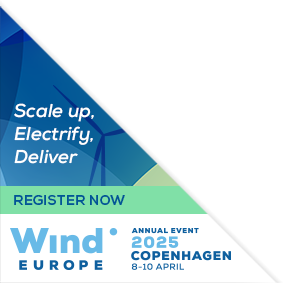Posters
Siblings:
ProceedingsProgrammeSpeakersPostersContent PartnersPowering the FutureMarkets TheatreResearch & Innovation in actionStudent programmePresenters dashboardCome meet the poster presenters to ask them questions and discuss their work
We would like to invite you to come and see the posters at our upcoming conference. The posters will showcase a diverse range of research topics, and will give delegates an opportunity to engage with the authors and learn more about their work. Whether you are a seasoned researcher or simply curious about the latest developments in your field, we believe that the posters will offer something of interest to everyone. So please join us at the conference and take advantage of this opportunity to learn and engage with your peers in the academic community. We look forward to seeing you there!

PO130: From extension cable towards multi-plug: Enabling multi-terminal multi-vendor HVDC offshore grids
Jan Teuwsen, Head of Offshore Grid Projects, Amprion GmbH
Abstract
The massive integration of offshore wind power into the European electrical power system significantly increases the demand for transport capacity as well as for operational flexibility in the electrical transmission system to respond to fluctuating load and infeed. As first innovation for an efficient integration of offshore wind, Germany decided to connect offshore grid connection systems (OGCS) near-load, so close to load centres farer south from the coast. Due to their high potential in grid cost optimisation, near-load OGCS are state of the art in German system planning today. The next innovative step will be the interconnection of OGCS at sea. The emerging offshore grid will bring many advantages - for all participating parties on a national and international level. The capacity utilization and thus the value of OGCS can be significantly improved, also adding new benefits. The interconnection of OGCS helps to balance regions with diverse electricity needs and wind resources - within and across market areas. The benefits of interconnected OGCS that are nearby offshore are particularly evident, especially if simultaneously their grid connection points show small load flow correlation. These interconnections provide operational flexibility to optimise load flows and thereby reduce or even avoid congestions in the onshore grid. In addition, international trading capacities can be increased with enhanced offshore interconnections for comparably small additional investments. The transition phase will state a challenge since the necessary technologies are still under development while national and international offshore targets must not be put at risk. Technology-wise, interconnected OGCS are multi-terminal systems, which are formed via DC-side interconnections between otherwise independent OGCS. This evolvement leads to more or less extensive DC grids whose implementation will require the interoperability of systems by different manufacturers. This paper will describe challenges and solutions for the transition from small single-vendor to large multi-vendor systems.










